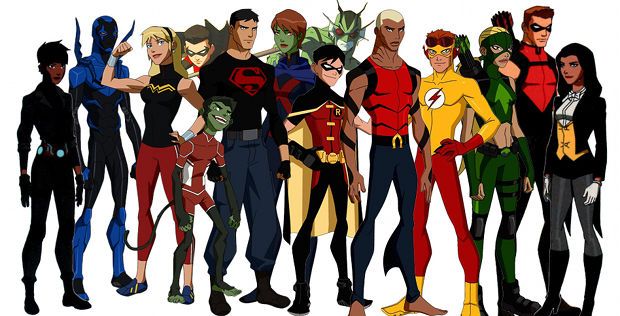'Young Justice' Has the Black Female Superheroes We've Been Waiting For

Black women waited for years to have a princess who looked like them, and now there is a growing presence of black female characters in the comic-verse.
Imagine, if you will, four very complex black female characters in animation all together in one show: two superheroes (Bumblebee and Rocket), one morally grey prison warden (Amanda Waller), and one supervillain (Queen Bee). DC Comic’s short-lived show Young Justice features in its two seasons the teenaged sidekicks of the senior members of the Justice League, and the young counterparts with whom they join forces. These characters exemplify diversity not only in regards to how race is portrayed in animation, but in academia, relationships, morality, and occupation.
The depiction of Queen Bee’s powers of sexuality over men and totalitarian rule over her empire, Amanda Waller’s morally ambiguous reign over a prison of supervillains, Bumblebee’s dedication to academics and her long-term relationship, and Rocket’s dedication to being a hero somehow all manage to become an archetype that encompasses what it means to be a black woman. Clearly we don’t have powers, but we do face issues of sexuality, relationships, interactions with other women, studies, and our jobs. Black women are not a monolithic group, and the complexity of this is what makes the dynamic of Young Justice so interesting.
It is encouraging to see that instead of placing these characters into the trope of a sassy black sidekick, the creators of the show instead gave them the depth they deserved. The characters are not visibly stereotyped and operate on very different planes of existence. They are given leadership roles and other innovative tasks. They are strong and they are vulnerable. They are good and they are evil. They are students and they are queens. This diversity is essential to a more widespread portrayal of black women in real life.
In relation to how black women have been portrayed in the past – especially in regards to superheroes – the multifaceted take on the black female characters in Young Justice is refreshing. For a long time, Marvel’s Storm was the only superhero who got major screen time and recognition, and for DC Comics to create a show where four black women have major roles is a step in the right direction.
Kinsey Clarke is a senior at Michigan State University. She enjoys aerial silks and solo trapeze in her spare time. You can follow her personal Twitter account here.

No comments: